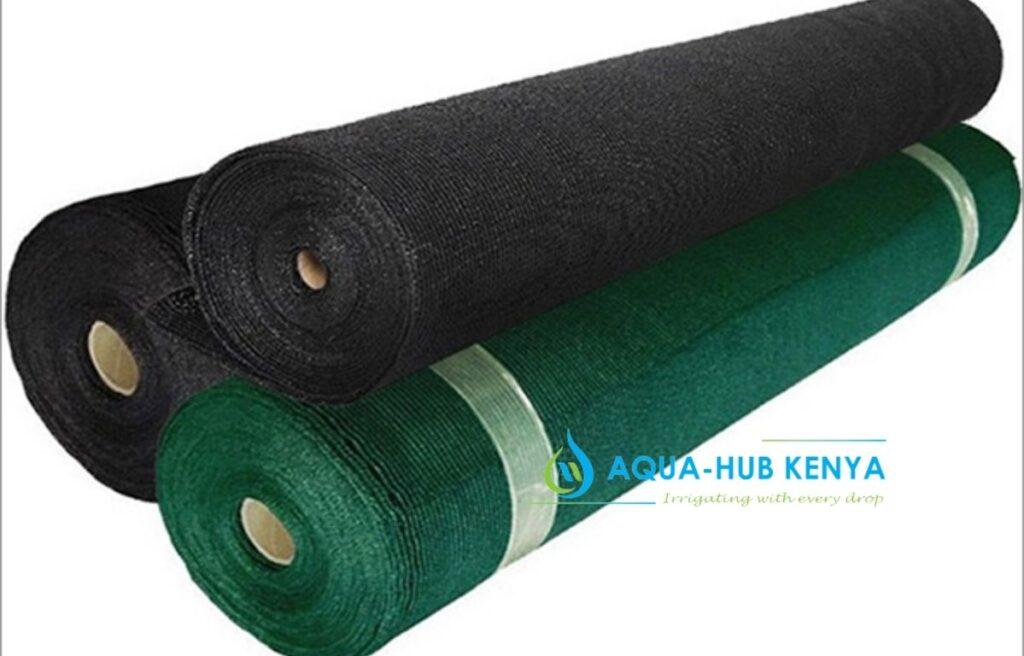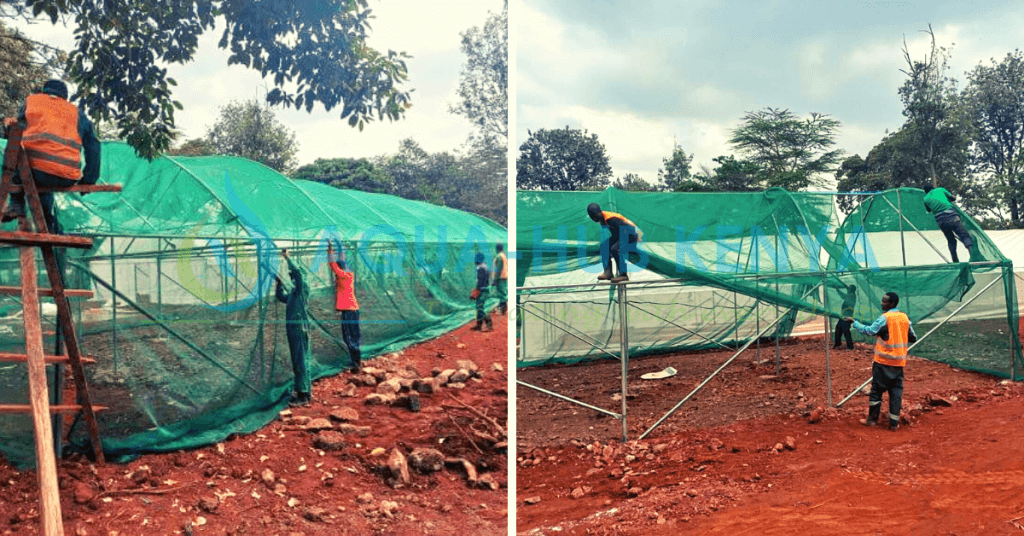Shade Net Nurseries in Kenya

We provide the best and high quality shade net nurseries in Kenya. Our shade net nurseries, the most affordable in the country. The prices will vary depending on the size of the nursery that you want. They provide off 30% to 90% shade. In Kenya, there are variations in the pricing and cost of shade nets between those with 30% filtration and those with 90% filtration. The price of our 4M*50M shade net increases along with the rate of filtration. Prices for a complete net with a shade net size of 4M*50M range from Ksh 13,000 to Ksh 30,000.

What is shade net nurseries in Kenya?
Shade net nurseries in Kenya are facilities where you grow young plants using shade nets to provide protection from extreme weather conditions and pests. These nurseries use shade nets to create a stable microclimate that helps regulate temperature and improve plant growth and development. The shade nets provide partial shade and reduce exposure to direct sunlight, heavy rainfall, and strong winds, which can be damaging to young plants. Shade net nurseries are widely applicable in Kenya for growing a variety of crops, including fruits, vegetables, and ornamental plants. The use of shade nets has many benefits, including reduced pest damage, improved plant health and growth, and cost-effectiveness.
What is the cost for shade net for nurseries in Kenya?
The cost of shade nets for nurseries in Kenya varies depending on factors such as the size of the shade net, the material used, and the supplier. On average, a 100 square meter shade net can cost between KES 13,000 to KES 30,000 and more in Kenya. The price may also vary depending on the level of quality and durability of the shade net.
We sell the whole net, which is typically 4mtrs (width) by 50mtrs (length) (length). The prices varies based on the shading of the shade nets.
| Shade rate (Filtration rate %) | Length (meters) | Price (KSH) |
| 35% | 4 x 50 | 13,000 |
| 55% | 4 x 50 | 16,000 |
| 75% | 4 x 50 | 19,000 |
| 90% | 4 x 50 | 30,000 |
Why use shade nets in Nurseries?
Shade nets are applicable in nurseries to provide protection and create a stable microclimate for young plants. The use of shade nets has several benefits, including:
- Reduced exposure to direct sunlight: Shade nets provide partial shade, reducing the exposure of young plants to direct sunlight, which can be damaging.
- Protection from extreme weather conditions: Shade nets protect young plants from heavy rainfall, strong winds, and other weather-related stressors.
- Improved plant growth and development: The stable microclimate created by the shade nets helps regulate temperature, which can improve plant growth and development.
- Reduced pest damage: Shade nets act as a physical barrier, reducing the damage caused by pests such as aphids, whiteflies, and spider mites.
- Cost-effectiveness: Shade nets are a cost-effective solution for creating a controlled environment for growing high-quality plants.
Overall, the use of shade nets in nurseries provides a sustainable and effective solution for growing young plants and helps to improve plant health and growth.
What are the features of shade nets used in nurseries?
Shade nets used in nurseries typically have the following features:
- Light transmission: Shade nets are designed to reduce direct sunlight exposure, but still allow enough light for plants to grow. Shade nets with different light transmission levels are available, depending on the specific requirements of the nursery.
- Durability: Nursery shade nets are usually made from UV-stabilized, high-density polyethylene material that is designed to be long-lasting and withstand harsh weather conditions.
- Mesh size: The mesh size of shade nets can vary, with smaller mesh sizes providing greater protection against pests. Shade nets with a mesh size of 20-50% are commonly used in nurseries.
- Size and shape: Shade nets come in a range of sizes and shapes to suit different nursery needs. Rectangular or square shade nets are the most common, but custom shapes and sizes can also be ordered.
- UV protection: Nursery shade nets should have a high level of UV protection to ensure they don’t degrade or break down over time.
- Easy installation: Shade nets should be easy to install, with hardware and accessories readily available for purchase.
In general, the features of shade nets used in nurseries should be designed to provide protection, improve plant growth, and be durable and cost-effective.

What are the factors to consider when buying shade nets for nurseries?
When buying shade nets for nurseries, the following factors should be considered:
- Light transmission: Consider the amount of light you need for your plants and choose a shade net with the appropriate light transmission level.
- Durability: Ensure the shade net is made of high-quality, UV-stabilized material that is designed to withstand harsh weather conditions.
- Mesh size: Choose a mesh size that will provide the right amount of protection against pests.
- Size and shape: Consider the size and shape of the shade net in relation to your nursery and the plants you are growing.
- UV protection: Look for a shade net with a high level of UV protection to ensure it lasts as long as possible.
- Installation: Consider the ease of installation when choosing a shade net. Make sure hardware and accessories are readily available for purchase.
- Price in Kenya: Consider the cost of the shade net, as well as its overall value for money in terms of durability, functionality, and other factors.
Overall, when buying shade nets for nurseries, it is important to carefully consider the specific needs of your plants and nursery, and choose a shade net that provides the best balance of protection, light transmission, and cost-effectiveness.





